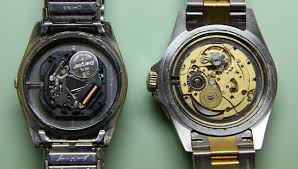Wristwatches have been a symbol of both style and functionality for centuries, and they continue to hold a special place in the world of accessories. In today’s modern era, watch enthusiasts are presented with a choice between two distinct technologies: quartz and automatic movements. This article explores the differences between these two watch types, focusing on precision and craftsmanship.
Quartz Watches: The Epitome of Precision
Quartz watches are often hailed as the pinnacle of precision when it comes to timekeeping. These watches operate on a battery-powered quartz crystal that vibrates at a consistent frequency, which allows for highly accurate timekeeping. In fact, quartz watches can keep time with an accuracy of just a few seconds per month, a feat that automatic watches often struggle to match.
One of the key advantages of quartz watches is their low maintenance requirement. Since they rely on battery power, how does watch lume work do not need winding or regular servicing. This makes them an excellent choice for individuals who prioritize accuracy and convenience in their timepieces.
Automatic Watches: A Testament to Craftsmanship
On the other end of the spectrum, automatic watches are a testament to the artistry and craftsmanship of watchmaking. These watches feature intricate mechanical movements that rely on a series of gears, springs, and a mainspring to keep time. The sweeping second hand, the delicate ticking of the gears, and the visible movement through a transparent case back all contribute to the allure of automatic watches.
Craftsmanship is at the heart of automatic watch production. Highly skilled watchmakers meticulously assemble and regulate each movement, often spending hours or even days on a single watch. The attention to detail and the handcrafted nature of automatic watches make them a symbol of luxury and tradition in the world of horology.
The Modern Dilemma: Precision vs. Craftsmanship
In the modern era, the choice between quartz and automatic watches often comes down to personal preference and lifestyle. Those who prioritize precision and accuracy in their timekeeping may find that quartz watches are the better choice. These watches are reliable, low-maintenance, and ideal for individuals with a busy and active lifestyle.
On the other hand, enthusiasts who appreciate the artistry and craftsmanship that goes into watchmaking may lean towards automatic watches. These timepieces are not just instruments for telling time; they are expressions of art and tradition. Wearing an automatic watch is like carrying a piece of history on your wrist.
The Intersection: Quartz Watches with Craftsmanship
It’s worth noting that the distinction between quartz and automatic watches is not always clear-cut. Some high-end watchmakers have successfully combined the precision of quartz movements with the craftsmanship of automatic watch design. These hybrid watches often feature quartz movements with added complications, such as chronographs or perpetual calendars, all encased in a meticulously crafted automatic-style watch.
These watches offer the best of both worlds: the accuracy and low maintenance of quartz technology along with the visual appeal and craftsmanship of automatic watches. They cater to those who seek a balance between precision and artistry.
Conclusion: A Matter of Personal Choice
In the end, the choice between quartz and automatic watches in the modern era boils down to personal preferences and priorities. Whether you prioritize precision, craftsmanship, or a combination of both, there is a watch that suits your style and needs.
Quartz watches excel in precision and convenience, while automatic watches celebrate the art of watchmaking and tradition. For some, the perfect watch may be a fusion of both technologies. In the ever-evolving world of horology, the choice is yours to make, and it’s a decision that reflects your unique taste and appreciation for the world of timekeeping.




